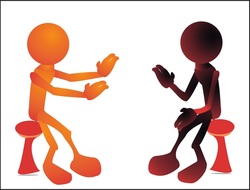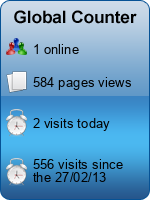
You have been on the hunt for an excellent new designer. You have googled, viewed a Brisbane advertising agency, emailed, called and met a few until finally you meet the designer you have been looking for. You may be thinking that the hardest part is over. Certainly, finding a designer who a) was suitably skilled, b) excited about your project and c) affordable means that it will all be easy sailing from here! Hmmmmm, not really!
There are several things that you have to keep in mind (and practise) when it comes to dealing with your new found partner in design. Actually, it really just comes down to one word: communication
Simple really, isn’t it. Communication is about sharing information.
Good communication will result in you building an amazing, collaborative relationship with your designer. Bad communication will most likely end up with you not receiving whatever you sought. Now, I’m not going to sit here and put it all on your (the client’s) shoulders. A client/designer relationship is the epitome of a two way street – there needs to be great communication from both sides. So to assist you, I’ve written several points below that will help both client and the designer to create a successful relationship.
CLIENTS
* Be open and honest with your designer. If you’ve got a couple of designers working on concepts to suit your needs, tell them. You never know, a little competition may just produce some out of the box results.
* Be clear, but concise with your vision. Understand what you want. Choose your words carefully to describe what you are after. For example , using the words ‘bold’ and also ‘vivid’ will most likely produce a different design result to describing your vision as ‘dark’ and ‘intense’.
* Understand that good design does take time. Nothing takes five minutes (and if it did I would be a bit worried! ). Determine sensible timeframes at the outset with your designer.
* Be able to make a decision. When your designer presents you with choices, you can take your time, but ultimately you need to make a YES or NO decision and own it. As always, communicating your reasoning behind your decision can help everyone progress.
* Provide a little praise along the way. Always give credit where credit is due. We hope you can gush when you see your design work, but even a basic ‘thank you’ or ‘great job’ will do wonders for the relationship.
* Pay your invoices promptly. No business wants to chase clients for money, so your designer shouldn’t have to either. If your payment will be late, a fast phone call or email to clarify is more believable than ‘I thought I’d paid that’.
* Trust your designer. A good designer will never lead you down the wrong path. Listen to what they say and trust that their suggestions and advice come from years of experience.
DESIGNERS
* Build a solid foundation with your client. You can not expect to produce amazing results based on a 5 minute phone call and a sketchy creative brief. Take time to understand your client and their business.
* Explain your process to your client. Give them a concept of how you attack a brand new job and give timeframes regarding up-dates, proofs etc .
* Be sure you listen carefully to your clients. In the early stages of a client relationship you need to learn everything you can about them and their business, so keep your ears wide open.
* Give advice when it is warranted. Many clients have very firm ideas about what they really want and how it should appear. As the expert, you might have some ideas which are not necessarily in line with their current thoughts but would benefit the project.
* Avoid industry jargon. Most clients will not know or even need to know what the dpi, ppi, native file, cmyk or bleed is. Keep it nice and simple when requesting information or explaining a design item.
* Try and provide examples whenever you can. When discussing ideas it can often be hard for any client to visualise what you can. If possible email them a good example that shows what you are talking about or give them the url link to check out an idea on the internet.
* Always put everything in writing. No doubt both you and your client are very busy and are working on more than just this project. To make sure that there is no misunderstandings on the way, it's important to document any discussions you might have had about the project and also email them through to the client.
Finally, an important point for both client and designer to remember is to be PROFESSIONAL with one another. When discussing your project either over the phone, through email or face to face, act professionally and treat one another with the respect you both deserve. Over time you may get to know one another on more personal, friendly level – but in the early stages of the relationship keep in mind that everything that you do or say can impact initial perceptions.
A relationship between the designer and a client can be so rewarding and inspiring – and I know this because I am lucky enough to have awesome clients. Just remember the number one rule – COMMUNICATION – and with any luck you will be as lucky as I am with Icreate Solutions.
There are several things that you have to keep in mind (and practise) when it comes to dealing with your new found partner in design. Actually, it really just comes down to one word: communication
Simple really, isn’t it. Communication is about sharing information.
Good communication will result in you building an amazing, collaborative relationship with your designer. Bad communication will most likely end up with you not receiving whatever you sought. Now, I’m not going to sit here and put it all on your (the client’s) shoulders. A client/designer relationship is the epitome of a two way street – there needs to be great communication from both sides. So to assist you, I’ve written several points below that will help both client and the designer to create a successful relationship.
CLIENTS
* Be open and honest with your designer. If you’ve got a couple of designers working on concepts to suit your needs, tell them. You never know, a little competition may just produce some out of the box results.
* Be clear, but concise with your vision. Understand what you want. Choose your words carefully to describe what you are after. For example , using the words ‘bold’ and also ‘vivid’ will most likely produce a different design result to describing your vision as ‘dark’ and ‘intense’.
* Understand that good design does take time. Nothing takes five minutes (and if it did I would be a bit worried! ). Determine sensible timeframes at the outset with your designer.
* Be able to make a decision. When your designer presents you with choices, you can take your time, but ultimately you need to make a YES or NO decision and own it. As always, communicating your reasoning behind your decision can help everyone progress.
* Provide a little praise along the way. Always give credit where credit is due. We hope you can gush when you see your design work, but even a basic ‘thank you’ or ‘great job’ will do wonders for the relationship.
* Pay your invoices promptly. No business wants to chase clients for money, so your designer shouldn’t have to either. If your payment will be late, a fast phone call or email to clarify is more believable than ‘I thought I’d paid that’.
* Trust your designer. A good designer will never lead you down the wrong path. Listen to what they say and trust that their suggestions and advice come from years of experience.
DESIGNERS
* Build a solid foundation with your client. You can not expect to produce amazing results based on a 5 minute phone call and a sketchy creative brief. Take time to understand your client and their business.
* Explain your process to your client. Give them a concept of how you attack a brand new job and give timeframes regarding up-dates, proofs etc .
* Be sure you listen carefully to your clients. In the early stages of a client relationship you need to learn everything you can about them and their business, so keep your ears wide open.
* Give advice when it is warranted. Many clients have very firm ideas about what they really want and how it should appear. As the expert, you might have some ideas which are not necessarily in line with their current thoughts but would benefit the project.
* Avoid industry jargon. Most clients will not know or even need to know what the dpi, ppi, native file, cmyk or bleed is. Keep it nice and simple when requesting information or explaining a design item.
* Try and provide examples whenever you can. When discussing ideas it can often be hard for any client to visualise what you can. If possible email them a good example that shows what you are talking about or give them the url link to check out an idea on the internet.
* Always put everything in writing. No doubt both you and your client are very busy and are working on more than just this project. To make sure that there is no misunderstandings on the way, it's important to document any discussions you might have had about the project and also email them through to the client.
Finally, an important point for both client and designer to remember is to be PROFESSIONAL with one another. When discussing your project either over the phone, through email or face to face, act professionally and treat one another with the respect you both deserve. Over time you may get to know one another on more personal, friendly level – but in the early stages of the relationship keep in mind that everything that you do or say can impact initial perceptions.
A relationship between the designer and a client can be so rewarding and inspiring – and I know this because I am lucky enough to have awesome clients. Just remember the number one rule – COMMUNICATION – and with any luck you will be as lucky as I am with Icreate Solutions.

 RSS Feed
RSS Feed
